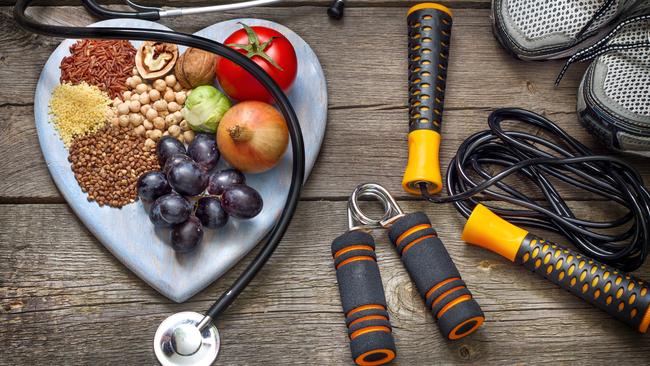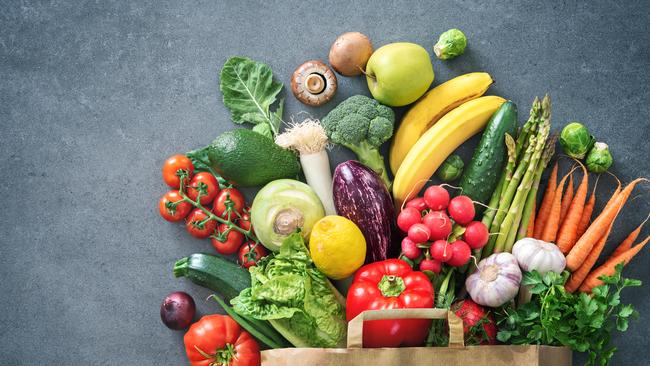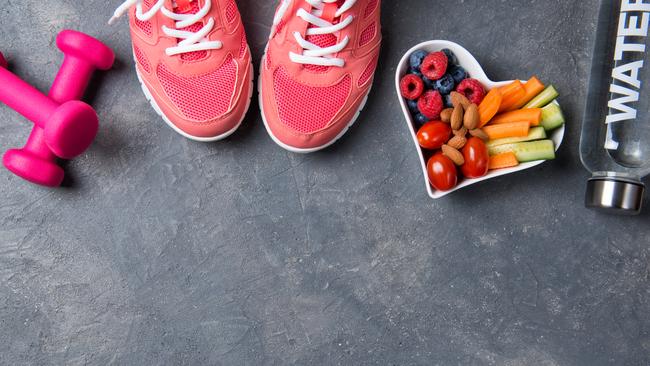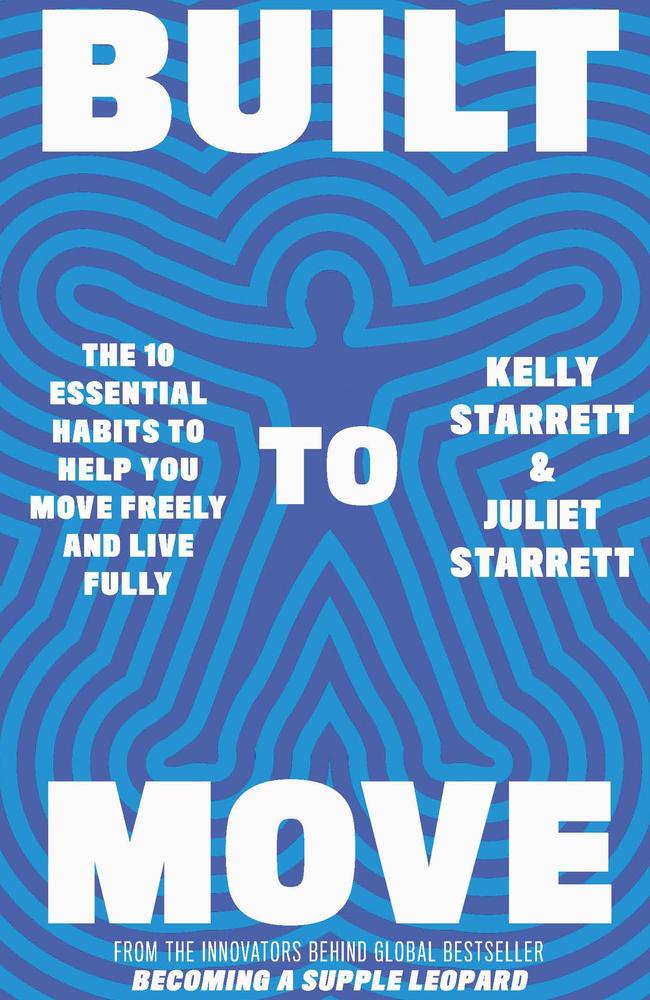Surprise reason your body doesn’t bounce back from a big night out - and how to fix it
This one simple thing will decide how you look, how you feel and how quickly you recover from injuries - or a big night out.

QWeekend
Don't miss out on the headlines from QWeekend. Followed categories will be added to My News.
Eat Like You’re Going to Live Forever
Food, of course, is many things to us.
But putting aside for a moment its association with comfort and culture and pleasure, food at its most basic provides the building blocks of our body and the fuel that keeps it running.
This is not news to you – people have been telling us we are what we eat since 1826, when the lawyer and gastronome Jean Anthelme Brillat-Savarin wrote, “Dis-moi ce que tu manges, je te dirai ce que tu es” (Tell me what you eat and I will tell you what you are).
What might be news to you, though, is that what you eat relates to how you move.

Your daily nutrient intake affects all the components that allow you to move, including your muscles, tendons, ligaments, and other tissues as well as your cartilage and bones.
It also influences the level of inflammation in your body and that, too, can affect movement.
And if you’re not eating right, you may potentially heal more slowly from injuries or surgery, something Kelly, as a physical therapist, has run across multiple times.
On one particularly notable occasion during his first year in practice, he was treating a client who had had meniscus transplant surgery, a procedure that involves replacing the shock-absorbing cartilage around the knee. The client came in with his knee swollen and inflamed well past the time it should have been.
“Why is your knee so angry?” Kelly asked, wondering what was going on. Then a lightbulb went off. “What did you have for breakfast?” he asked. “A box of cereal,” the client replied. The guy had spent thousands of dollars on this costly surgery, only to eat like a teenager without a care in the world!
What he thought of as “breakfast” was in reality a sugar bomb low in both protein and micronutrients. His diet wasn’t providing the elements he needed to heal, and it was showing. Again, you are what you eat.

Tissues that are nourished improperly not only behave differently, but some massage therapists report they even feel different to the touch.
A sensitive therapist can tell when a client is living on highly processed foods – they lend themselves to inflammation throughout the body as well as other noticeable problems. Poorly hydrated and nourished tissues don’t behave in the same way as hydrated and nourished tissues.
Have you ever looked in the mirror the morning after a big night of pizza and beer with your friends? Your skin may not look quite as young as it did the day before! The bottom line is that, no matter what it is you’re building – whether it’s a human being or a house – you get better results when you use the best raw materials available.
Our approach to nutrition is all about good fuel – quality nutrients. We’re not fussy about the configuration of those nutrients. We are not, for example, for or against Paleo or Atkins or Mediterranean or Whole30 or Keto, or any other particular diet. We don’t care if you’re vegan or vegetarian or carnivore.
We know people who have had success with all of the above; different things definitely work for different people.
Besides the sweeping admonition “Don’t base your diet on crappy, processed food”, we are primarily interested in two things and two things only: protein and micronutrients. It’s been our experience that when you focus on these two things, everything else – including calorie control and healthier eating habits – falls into place.
These two elements of the diet also fit into what Cate Shanahan, MD, calls the Four Pillars of World Cuisine (more generally, the Four Pillars of the Human Diet).

In her book Deep Nutrition: Why Your Genes Need Traditional Food, Shanahan explains that just about every culture the world over eats foods that are nutritionally equivalent. They may look different – one culture’s pickled turnips are another culture’s kimchi; you’ve got pork ramen in one country, caldo de pollo in another – but they have commonalities, and those commonalities are no accident.
As humans, we are built to thrive on the foods our ancestors so wisely sussed out, learned to properly prepare, and passed down through cultural traditions. Our DNA is waiting! Shanahan’s research led her to single out these four shared elements of the optimal human diet: meat on the bone; fermented and sprouted foods; organs and other offal; fresh and unadulterated plant and animal products.
While you may not subscribe to the particulars Shanahan recommends – we know organ meats, for instance, are a hard sell – you can still take away the basic tenets of her Four Pillars, which is that the body needs protein and unadulterated foods, including fruits and vegetables, our greatest source of micronutrients.
The tests and physical practices for this vital sign are designed to make eating simple. They don’t offer a quick fix, nor were they conceived to turn you into an Instagram model with shredded abs. These are nutrition strategies for maintaining a robust, healthy body – no matter what body type nature gave you.
And, again, they’re designed to keep things simple. The world around us keeps manufacturing complex solutions for what should be blissfully uncomplicated. Five-hour energy drinks? Keto candy? What the …? And have you walked down the supplements aisle lately? Granted, supplements can be helpful in certain circumstances and taking a daily multivitamin can be good insurance. But nothing takes the place of real food.
Everything you need in your diet is available at your typical, no-frills grocery store. And you can scale up from there.

If you love to cook, take these simple ingredients and have at it. Same goes if you love to eat out; just keep our recommendations for protein and micronutrients in mind as you order. If you’re training for a marathon, add more carbs. If you’re trying to lose weight, scale back the calories. It doesn’t have to be rocket science and the payoff will be tangible.
Take the rewards of getting adequate protein. Protein figures decisively in building and maintaining muscle, and maintaining muscle, of course, figures decisively in the body’s functionality. Protein also figures into sustaining other parts of the body, like all your connective tissue and the lining of your small intestine.
Something we’ve learned when talking to people about their diets is that it’s not widely known that our protein needs increase as we get older. Gradually, but early on, the body can begin to lose muscle mass. It starts when we’re in our thirties and typically continues apace at a rate of about 3 to 5 per cent a decade, depending on genetics, how active you are – and your protein intake.
Because, while many factors figure into age-related muscle loss, one of them is a decline in the body’s ability to turn dietary protein into muscle. So imagine the consequences if you’re not getting enough protein to begin with.

That’s why we’re such big advocates for keeping the little muscle-making factories in our body well stocked. By making sure you eat enough protein throughout the years, you can help slow this inevitable part of the human condition.
Micronutrients, the other aspect of nutrition we consider high priority, also play a starring role in movement health. Micronutrients are vitamins and minerals that are essential to wellness. In plant foods, they often come accompanied by phytochemicals, compounds like flavonoids, phenolic acids, isoflavones, curcumin, isothiocyanates, and carotenoids, which have been shown to have their own health benefits. (Macronutrients are the big guns – fat, carbohydrate, and protein.)
These small but mighty elements assist in the growth and development of cells, immune function, energy production, nerve conduction and muscle contraction, and hundreds of other processes that keep the body running smoothly. You can’t live without them, though you can get by with minimal amounts. But who wants to just get by?
Healthy eating is about compromise. Food should be a joy. You don’t want to be the person who can’t go anywhere and misses out on the bonhomie that surrounds eating because your diet is so restricted.
On the other end of the spectrum, you don’t want to be someone who takes no care about what you consume. The goal is to be somewhere in the middle. Find that happy place.




